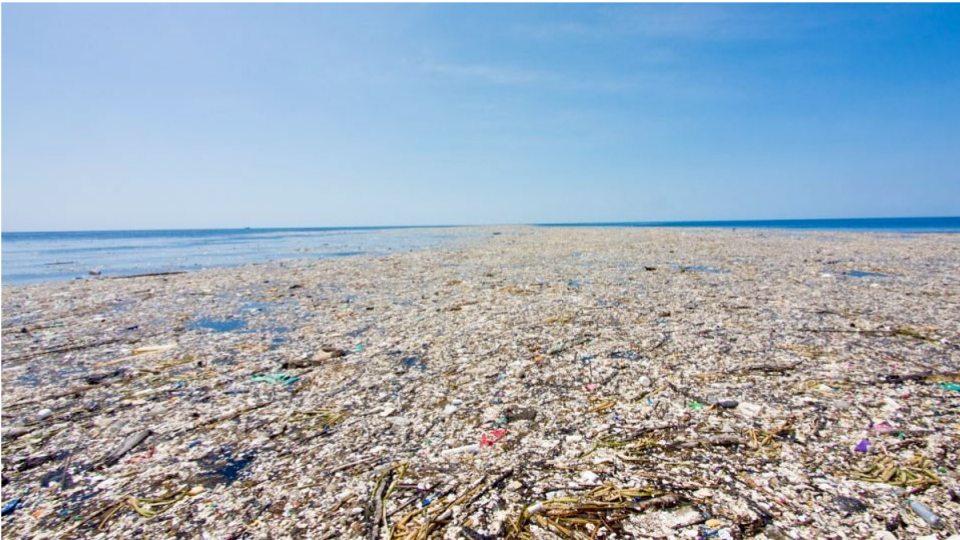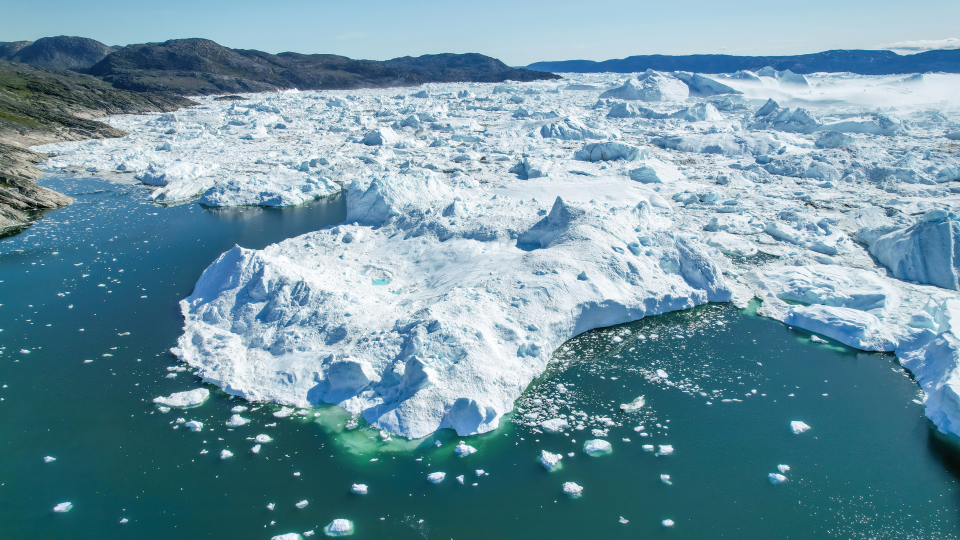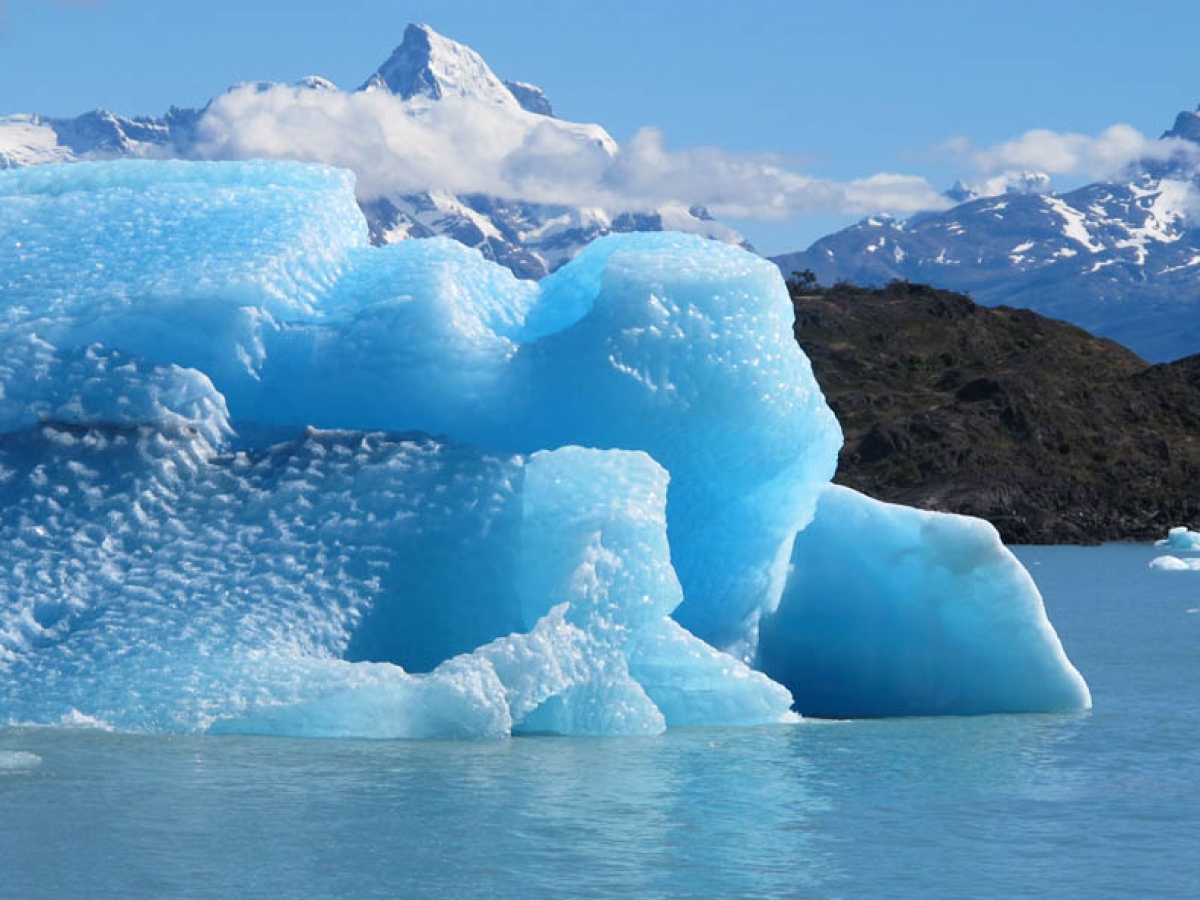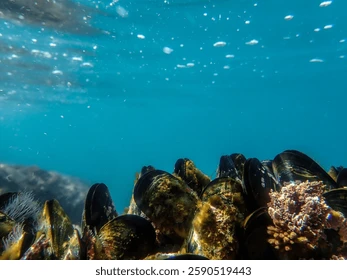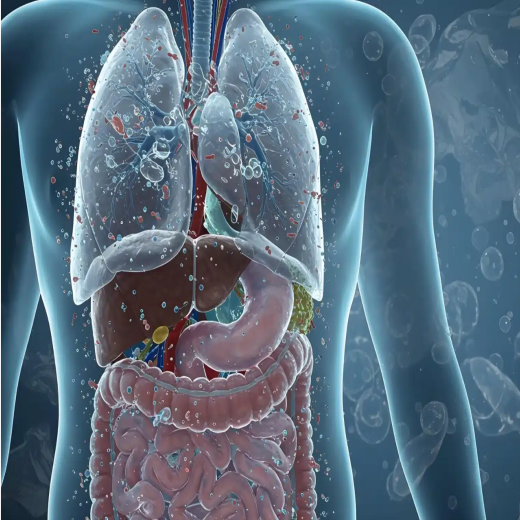Nanoplastics: when the infinitely small sneaks in everywhere
Invisible to the naked eye but found everywhere, nanoplastics are the stowaways of our modern age — slipping from the ocean straight into our cells, easily crossing the boundaries of air, water, soil… and living organisms.
Nanoplastics: what are they?
Picture a piece of plastic a thousand times thinner than a human hair. Nanoplastics (NPs) range from 1 to 1,000 nanometers in size and behave like “colloids” — they don’t sink, but they don’t float either. Instead, they stay suspended in the water, ready to drift along with the currents (Gigault et al., 2018 📖).
They have two main origins:
-
Primary: intentionally manufactured for specific uses, such as cosmetics or medical nanocapsules (Gregory, 1996 📖).
-
Secondary: formed when larger plastics — bottles, textile fibers, tires — break down under the action of sunlight, waves, friction, or microorganisms (Cole et al., 2011 📖).
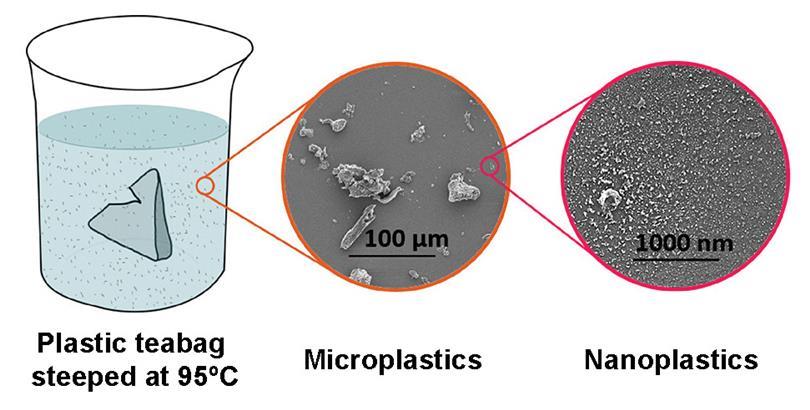
For a long time, NPs went undetected. Thanks to advanced techniques, they’ve now been found all over the planet.
Are they dangerous?
Nanoplastics aren’t just harmless stowaways — they interact with living organisms… and not always in a benign way.
Where does research stand? What are the challenges? Research on NPs only began about a decade ago, but it’s expanding quickly. Still, several hurdles make it difficult to fully understand this pollution:
Lack of standardization
Right now, there’s no universal agreement on how to sample and analyze nanoplastics. This lack of consistency makes it hard to compare studies.
Analysis and Quantification
Measuring nanoparticles in complex matrices (water, soil, biological tissues) is extremely difficult. Current methods all have limitations — whether in size detection, sensitivity, or because they are destructive.
Representativeness of Toxicology Studies
Most toxicology experiments use well-defined synthetic particles (e.g., polystyrene beads) and often at very high doses. But real environmental particles are much more heterogeneous: they’re a mix of polymers, at variable concentrations, often coated with biofilm or pollutants. This makes it hard to translate lab results to actual human exposure.
What Now?
Faced with this invisible pollution, science, policy, and our everyday habits all need to move forward together to limit plastic leakage.
On the science side
-
Improve sampling and characterization: optimize and standardize sampling protocols and analytical methods to identify and quantify nanoplastics in all kinds of environments and organisms.
-
Carry out toxicological and epidemiological studies with particles that truly reflect environmental conditions — in terms of concentration, size, and chemical composition.
On the policy side
-
France’s AGEC law plans to phase out single-use plastic packaging by 2040. Right now, it’s estimated that 50% of environmental waste comes from single-use plastics.
-
Encourage reduction at the source (e.g., bringing back reusable glass bottles) and improve recycling and waste-treatment systems.
-
Establish international standards for safe limits.
On the citizen side
From our shopping carts to our washing machines, every decision can help reduce invisible pollution:
-
-
Limit plastic use: choose bulk goods, durable containers, and tap water.
-
Cut down on new synthetic clothing to slow down fast fashion and fiber release (washing our clothes can release up to 700,000 fibers per laundry cycle 📖).
-
Say no to straws, disposable cutlery, and unnecessary packaging.
-

